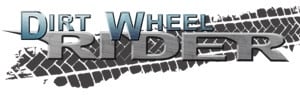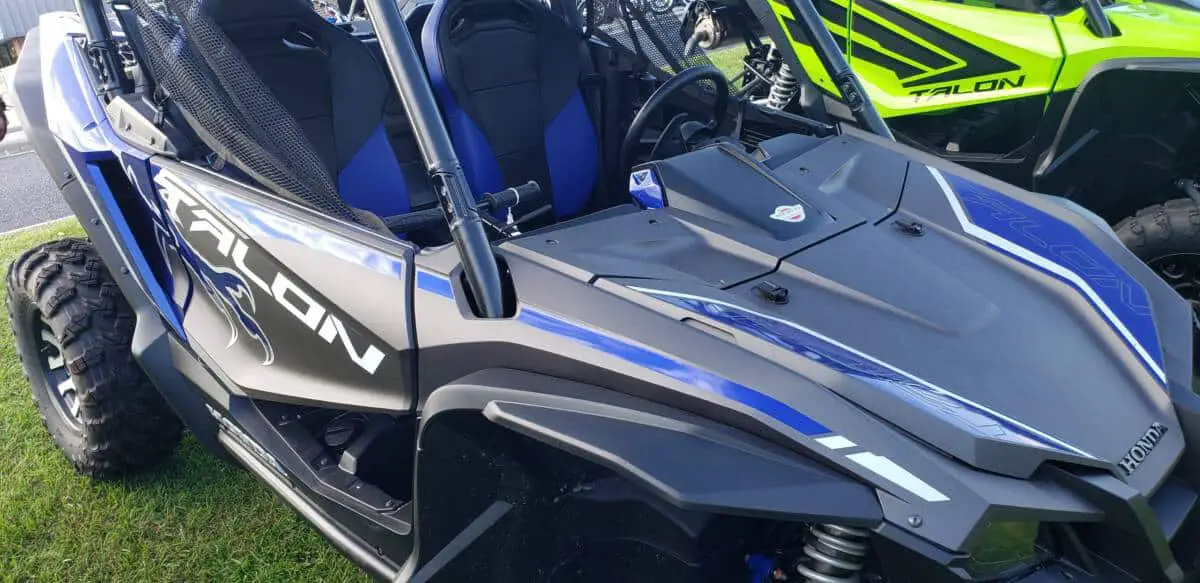Table of Contents
ATVs and UTVs, or side by sides, share a lot of the same characteristics and a lot of people don’t really know a lot about them. It is easy to just say that one is safer than the other based on statistics but this is simply not the case. ATVs have been popular for YEARS longer than UTVs and are ridden more irresponsibly and on highways and paved roads.
ATVS can reach speeds that would allow them on highways. Their low pressure tires and high center of gravity make ATVs more prone to tip over or lose control on pavement or gravel. Studies show that over 50% of ATV deaths occur on private or public roads.
Manufacturers did not design these vehicles for this purpose and it is recommended that they do not travel on anything but trails. Just because the statistics say there have been more deaths since 1982 when ATV deaths were starting to be tracked, is a long time before they started tracking UTV deaths.
Read more and I will let you in on what actually makes each one dangerous and whether or not a UTV IS REALLY SAFER than an ATV.
Safety Tips (The Do’s And Don’ts) For ATVs And UTVs
First and foremost is making sure that you are as safe as possible when operating an ATV or UTV. Both machines are inherently dangerous due to the nature of the vehicles but maintaining proper riding etiquette and proper techniques will accomplish a lot more than just figuring out if one machine is safer than the other.
1. Wear The Proper Safety Gear
It is not mandatory in all states for ATV and UTV riders to wear helmets when operating their vehicles but common sense says that you need to do that. After all you are protecting your brain. Some states do require gear manufactured to DOT (Department of Transportation) standards but to maximize your safety, always wear one. Always consult your local DMV (Department Of Motor Vehicles) or local laws regarding helmet use for off road vehicles.
Along with helmets is a list of protective gear that will make riding either type of off road vehicle much safer. The list includes riding boots, long pants, a long-sleeved shirt, gloves, and goggles and each will do its part in helping to prevent injuries.
Check out the products I have researched and tried on or currently use myself over at my recommended gear page. There is gear that will work for almost any type of riding you may want to do over there.
2. Stay Off Public Roads
ATVs and UTVs aren’t made for public roads and their low pressure tires are designed for off road use only. This is one of the leading causes of accidents that resulted in death when operating UTVs and ATVs. Some states allow you to make either vehicle street legal after passing safety inspections, having the correct type of tires, as well as a list of features that are normally needed to install to become street legal. I made a comprehensive list of what states they can be street legal, what is required in each state, and links to local laws in this article.
3. Don’t Drink And Drive
This should be a no brainer. Driving while under the influence of any substance, not just alcohol, can impair your judgement, reaction times, and can be a deadly consequence. These vehicles may be smaller than normal passenger cars but it is imperative to take the same precautions and not drive under the influence.
If you manage to not get hurt or injure someone else, the laws in most states will give you a DUI ticket for driving while impaired. This can cost serious money and cause you to lose your normal vehicle license as well.
4. Stay Inside The Vehicle
Riding at high speeds or through obstacles on trails poses a large enough risk to the riders of ATVs and UTVs but sticking your hand or leg outside the area of either vehicle can cause serious damage to you should something happen. In the event of a crash of any sort, be sure to keep your arms inside as well to make sure you don’t have your body or a body part caught between you and a several hundred pound machine and the ground.
5. Choose An ATV or UTV That’s Right For Your Age And Size
ATVs and UTVs all come standard with minimum age requirements and recommendations in their user manuals and plastered on the vehicle somewhere. 20% of ATV related deaths are from children under the age of 16 since 1982 and most of this is because they were riding a vehicle that was too big or too powerful for them.If you don’t want to buy a smaller vehicle because you will have to get one again in a few years because they outgrew it, then don’t buy one for them.
These age requirements are there for a reason and serve to protect children from machines that they are not ready for. In some states it is punishable by law to allow children to drive an off road vehicle above their age.
Even if the manufacturer requirements say that drivers under the age of 16 can drive the vehicle, they still need to be monitored at all times. Children do not have the same experience, knowledge, and reactions as an adult and can get into an accident much more easily if not properly supervised.
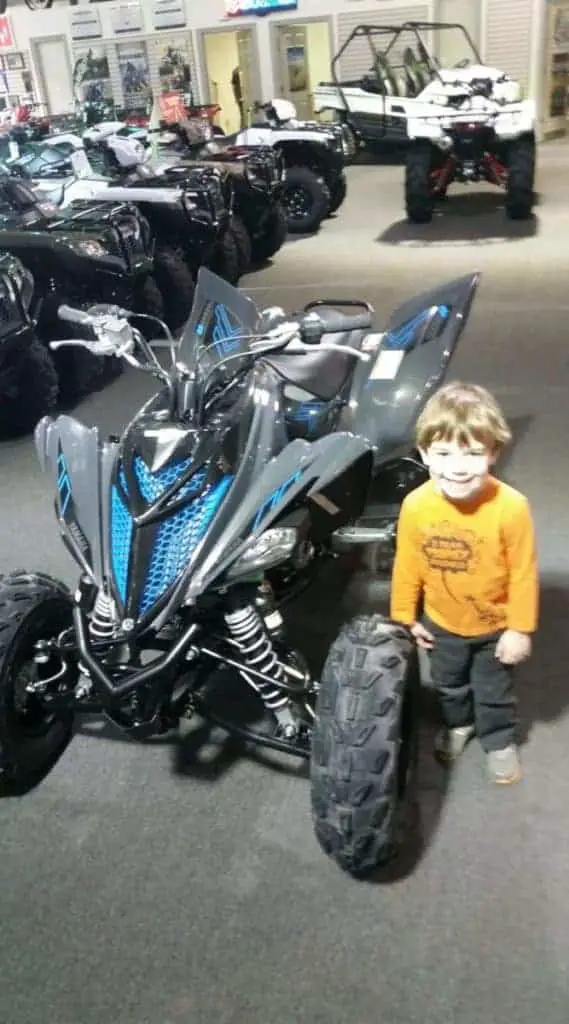
Are UTVs Dangerous?
The simple answer to this question is yes, UTVs are dangerous just like anything else that has a motor and propels a person at speeds that no human can attain without machine power. UTVs are inherently dangerous but most people love to feel the thrill and adrenaline of going fast and turning hard. Operating a UTV at higher speeds increases the risk for accidents to happen and puts the passenger at danger of injury should anything happen.
Luckily UTVs have been designed with several pieces of safety equipment that help minimize the risk of injury or death occurring.
UTV Safety Equipment
Take a look at the many different features that have been added to increase the safety of these vehicles. Most UTVs come standard from the factory with:
- Windshields – These serve the same purpose as a car windshield and protect the driver and passengers from dirt and debris from striking them and possibly causing damage. Many UTVs come from the factory with half or full windshields but some require installation of aftermarket ones. I prefer flip up windshields myself and you can check out this article on what UTV windshield are made of, or if you are ready, then this windshield is a great choice from Amazon.
Keep your windshield clean so you always have maximum visibility to see what lies ahead on the trails. If you want to see how to properly clean your UTV windshield then check out my how to guide on cleaning a utv windshield.
- Full Or Half Doors – UTVs usually either come with half doors or no doors at all. Doors will protect you from falling out of the vehicle, in most cases, and add a bit more protection from dirt and debris. Installing full doors onto your UTV can protect you even more from debris and branches as you drive down the trails.
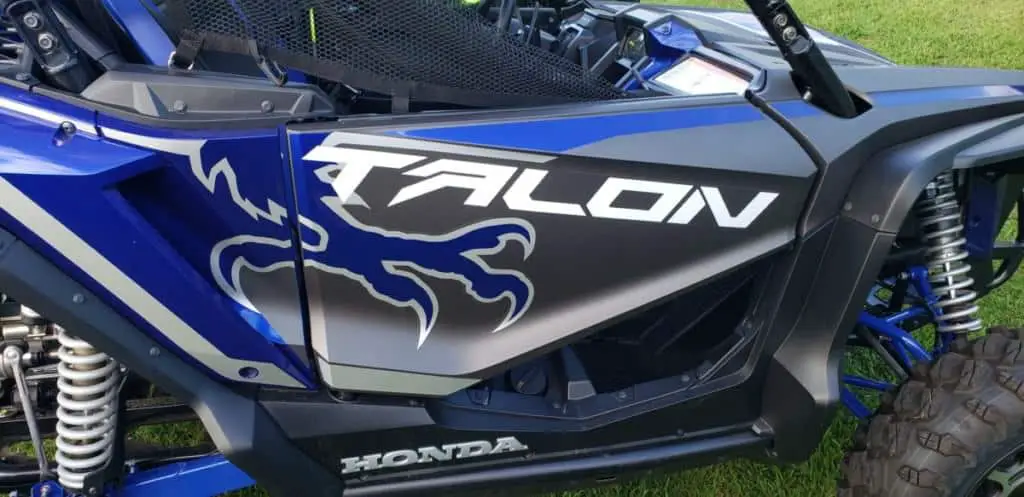
- Headlights – Headlights are essential at night and even during the day to enhance visibility for you and to make sure other riders and pedestrians can see you coming.

- Headache rack – This is a piece of metal that sits between the driver and passenger seats and the bed of the UTV. This keeps your cargo in the back and keeps it separated from the cab to maintain line of site and keep the cargo from bouncing up front.
- Rollover Cages – Rollover cages are touted as the best reason to get a UTV. They will protect the passengers during a rollover from getting crushed. This is a good safety feature but it does not address the other things that may happen during a rollover.
While most UTVs come equipped with a rollover protection system, in the Consumer Product Safety Commission stated, “UTVs may still exhibit inadequate lateral stability, undesirable steering characteristics, and inadequate occupant protection during a rollover crash.”
- Four Point Harness – UTVs have a factory installed over the shoulder seat belts but four point harnesses are a must if you are going to be going over terrain at any kind of speed. In order to upgrade to four point harness you will have to install aftermarket seats to accommodate the new harness feature. Creeping around the farm at 10 mph probably won’t warrant a 4 point racing harness. Four point harnesses secure the rider in four places which maximizes the safety and security the belts provide.
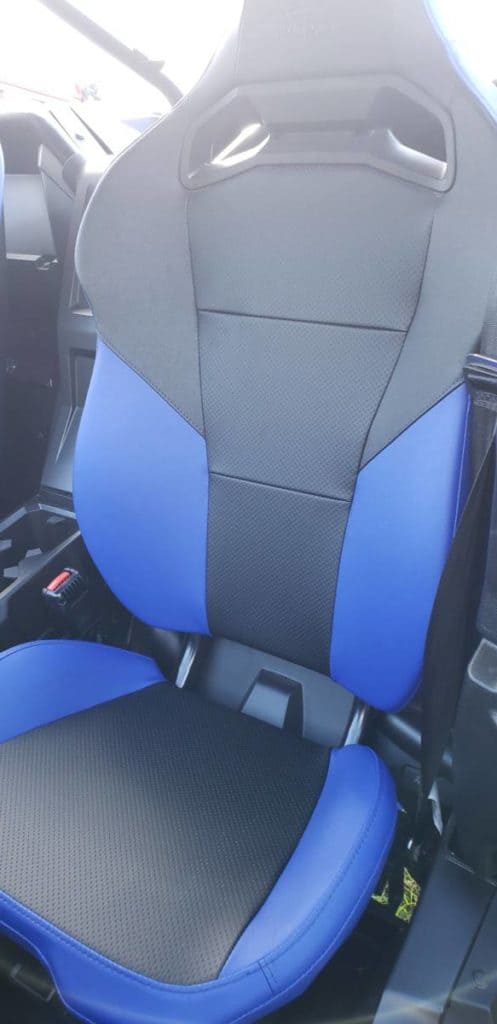
The Downsides Of UTVs
Now I know that every vehicle has recalls but most of the recalls with UTVs feature safety products mentioned above. Not only do UTVs cost 2-3 times as much as a good ATV, they still have problems so be sure to look out for recalls on your model. Several recalls have been initiated for:
- Braking issues
- Fuel leaks
- Faulty door hinges
- Overheating engines
Safety is a big concern and needs to be addressed when making your decision to buy based on what you think is the safest choice. UTVs are by no means “safe” but as an owner you can take every necessary measure to make them safer.
Are ATVs Dangerous?
Again, the answer is yes. Are they more dangerous than UTVs? They can be very dangerous if not ridden responsibly and the lack of safety equipment that comes standard. This can lead to them being more dangerous in the event of a crash. ATVs are an open design which means the rider straddles the seat and there is no seat belt or backrest or rollover cage to protect and secure the rider. This does however allow the rider to use active riding techniques to separate themselves from the ATV if they do lose control. Active riding techniques mean that you as the driver needs to move to control and shift the weight and also means when a crash is about to happen or you need to you can just you can jump off!
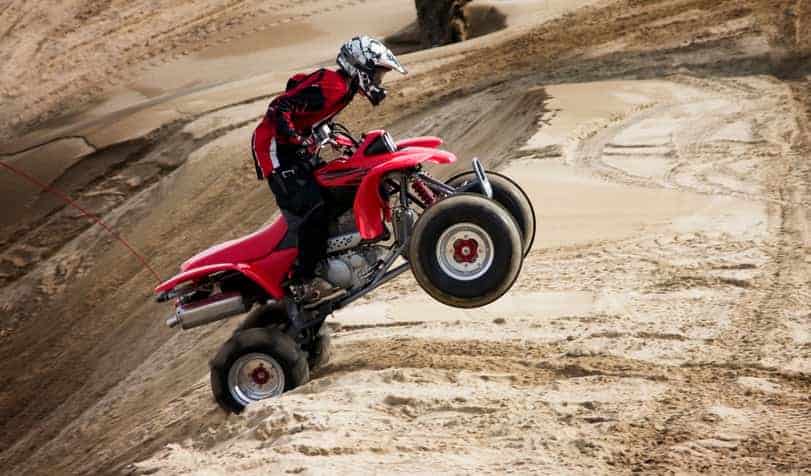
ATV Safety Equipment
Let’s take a look at a few of the things that ATVs do have that enhance their safety qualities. They include:
- Windshield – ATVs do not come standard with windshields but you can get an aftermarket one that will cover the handlebars and protect your hands and some of your body from flying dirt, debris, and hanging branches.
- Engine Kill Safety Cord – This device is essentially a kill switch. You attach a cord from you to the kill switch on the ATV. If you have to eject yourself or you happen to fall off, the switch will be pulled and cut off the engine so it doesn’t keep running and cause any extra damage or injury.
- Rear Rollover Bar – There are a few companies that make rollover bars that address the need for some kind of crush protection in the event of a rollover at lower speeds.
Overconfidence On 4 Wheels
Many riders think that just because there are four wheels that they are much safer when riding on uneven terrain. This applies to people that operate both UTVs AND ATVs. Riders become overconfident and think that they can take any terrain when the fact is, that they can be more dangerous. Four wheels trying to do four different things at the same time will cause either vehicle to turn or roll in ways that are unintended.
ATVs have a high center of gravity but the rider can shift their weight and move their bodies to help keep that CoG lower as they go ever terrain and into turns.
While UTVs have a lower frame CoG, they generally have roll over cages that sit very high and make their overall CoG higher and drivers can become overconfident with that.
These high CoGs attribute to many rollovers especially when taking sharp turns and cornering at high speeds.
Why Are UTVs Limited To 1000cc?
One big question is why don’t UTV manufacturers make larger displacement engines. Well the answer is pretty simple when you think about it. It all comes down to safety. The ROHVA (Recreational Off-Highway Vehicle Association) has imposed a 1000cc limit for its member companies and for their recreational off-highway vehicles and ROVs in these companies must meet certain requirements. The 1000cc limit on engine size is one of them. These are guidelines used by state and federal agencies to grant or restrict land access and to enforce DOT registration requirements and tax laws.
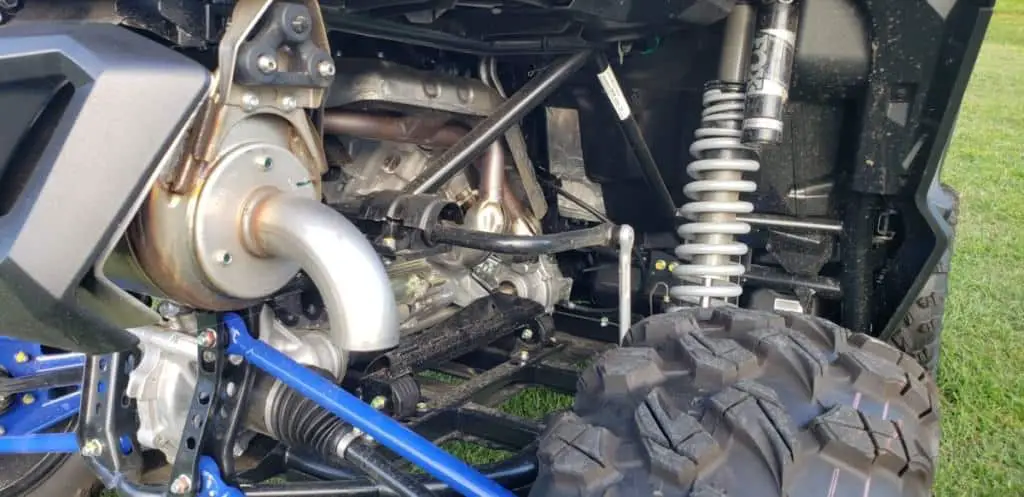
This doesn’t mean that a UTV can’t have more than a 1000cc engine, however. If you had a UTV with a larger engine then it would no longer be considered an ROV and could be subject to other regulations and requirements that an ROV is not likely to be subject to which may include:
- Crash test requirements due to higher speeds and occupancy limits
- Air bag requirements
- Multi-point safety inspections in accordance with on highway vehicles
UTV manufacturers would have to sink a whole lot more money into their vehicles and the cost would increase to the consumers and possibly even affect sales, so they limit them to only 1000cc engines.
The Recreational Off-Highway Vehicle Association definition for recreational off road vehicles states that “A Recreational Off-Highway Vehicle is defined as: “a motorized off-road vehicle designed to travel on four or more non-highway tires, with a steering wheel, non-straddle seating, seat belts, an occupant protective structure, and engine displacement up to 1,000cc (for gasoline-fueled engines).
Current models are designed 2, 4, or even 6 passengers and their performance capabilities allow them to be used to both work and play. Many UTVers are not happy with the stock engines that come equipped and will modify them to make the faster and have more torque. Some enthusiasts go all out and port and pollish, add turbos, and do all kinds of engine work to make them as fast as possible. These upgrades make their UTVs less and less safe the faster they get their vehicles.
If you are one of the people that likes to get every single bit of power out of their vehicle and you are fine with taking the risks that you assume when doing these mods then that is ok. Make sure you are safe and wear all your gear. I have made a list of mods that will increase the performance of your UTV in this article, so go check it out.
The Safest Choice
The safest choice is really up to you as the operator. Either machine can be dangerous if not driven with respect and if not gearing up properly. It is recommended that you take safety courses and learn the local laws where you live to make sure you have a firm grasp on what you can and can’t do. Check your local power sports dealer to see if there are any safety classes you can take so you can learn proper riding techniques because at the end of the day it all comes down to inexperience on whatever machine you choose.
